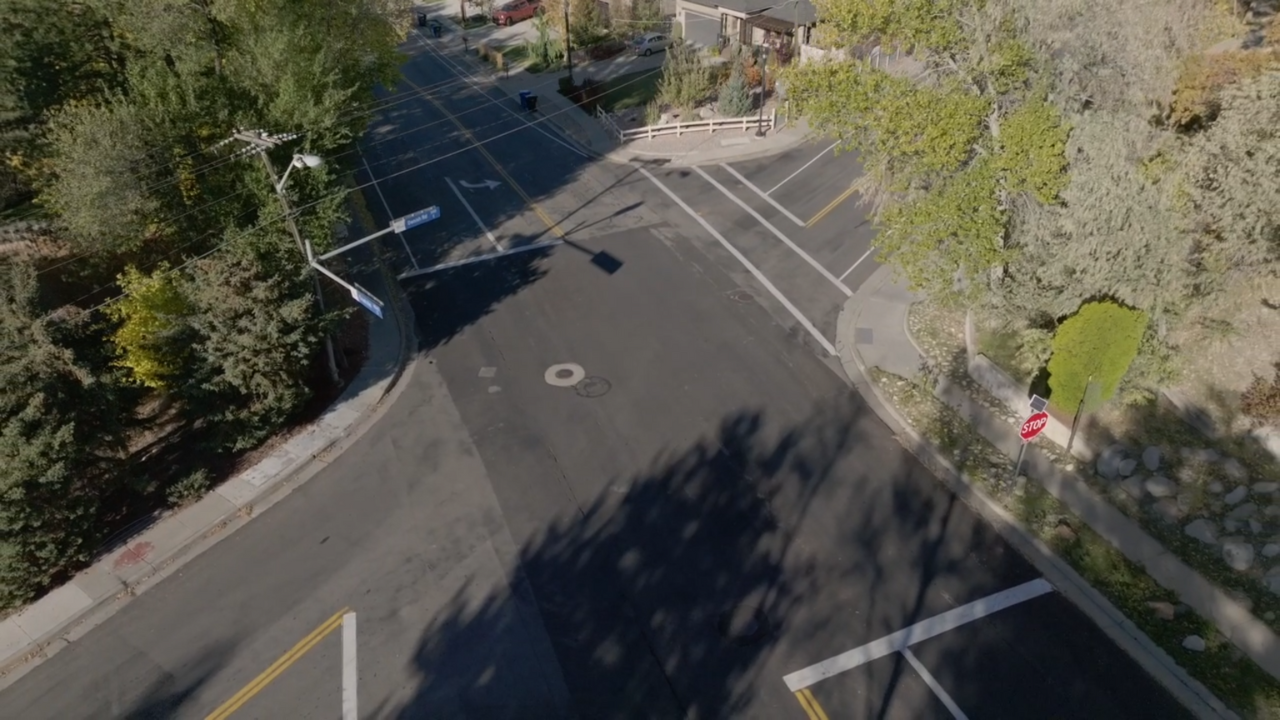COTTONWOOD HEIGHTS, Utah — Alan Mark recorded dozens of cars rolling through the stop signs at the corner of Danish and Creek roads.
He also captured a garbage truck not coming to a full stop.
“There should be a certain level of comfort that you have,” Mark said, as he spoke to FOX 13 News on the corner of the intersection, “walking outside with your dog, with your family, kids playing.
“And we don't seem to see that because of the growth of this of the city and lack of action on their part.”
He’s referring to the Cottonwood Heights government. Lobbying to improve safety at the intersection has become a cause célèbre for Mark and his neighbors. Mark says he has spent thousands of dollars hiring an attorney to pursue public records requests, figuring out how many vehicles pass through the corner and how often police issue citations at or near it.
Besides cars rolling through the four stop signs, the residents say too many motorists are driving too fast in the residential neighborhood.
“It seems like there would have to be a tragedy for anybody to care,” said Melanie Simon, who lives near Creek and Danish roads with her family.
The Utah Department of Public Safety lists just one pedestrian accident at the corner of Creek and Danish roads. It was in 2010 and caused minor injuries.
But residents like Chase Ingo don’t feel safe. He walks through the intersection to reach his Catholic parish.
“And I’ve had to yield to other cars,” Ingo said. “I didn’t think they were going to stop – they were coming so quickly.”
Houses, freeways, mountains
Cottonwood Heights was incorporated in 2005. It’s a collection of homes and businesses against the foothills of the Wasatch Mountains. The 2020 census said it had 33,000 people – slightly more than the prior decade.
But Cottonwood Heights sits along Interstate 215 and the mouths of Little and Big Cottonwood canyons. The intersection of Danish and Creek roads has gone from being a residential crossway to a thoroughfare for commuters going to work and recreationists wanting to ski or hike.
Meanwhile, there are no marked crosswalks at the intersection – just white paint specifying where the drivers are supposed to stop.
Map below shows Cottonwood Heights intersection that has caused concerns:
Mark erected a camera aimed at the intersection for a few days in 2024 to record drivers traveling back and forth. When his video evidence failed to sway Cottonwood Heights administrators and politicians into action, he shared a compilation with FOX 13 News.
Among the ideas Mark and his neighbors have to make the crossroads safer: speed bumps or elevated crosswalks, a roundabout, a traffic light, or narrow orange plastic poles lining the lanes to grab drivers’ attention.
Cottonwood Heights police have occasionally sent an officer to pull over drivers traveling too fast or who don’t come to a complete stop. Mark and his neighbors would like more of that, too.
“There's a lack of enforcement here,” Mark said.
His representative on the city council, Ellen Birrell, says she has also asked the city for fixes to the intersection. Birrell said she’s been told Cottonwood Heights would prefer to apply for state or federal grants rather than use its own money. Such grants can take years, if they’re ever successful.
But Birrell says she also sees Danish and Creek roads as part of a statewide problem.
“The broader issue for Utah is that we have invested in what's called suburbia,” Birrell said.
“There's motorists who are getting off of I-215,” she added, “having driven 80 to 90 miles an hour, and then they get on our collectors and arterials and still feel a sense of entitlement.”
Mark has video supporting that, too. Not far from the intersection, Cottonwood Heights has a speed monitor showing vehicles consistently going faster than the 25-mph limit.
And Mark has recorded motorists crossing the double yellow lines to pass.
Calming traffic
Reid Ewing, who holds the title of distinguished professor of city and metropolitan planning at the University of Utah, thinks the best way to get drivers to stop at the Danish and Creek roads intersection is to slow them earlier.
“I would put in either speed humps or one of the other traffic calming devices before the intersection to slow traffic,” Ewing told FOX 13 News. “When it arrives at the stop sign, it will be hardly moving.”
Cottonwood Heights’ city manager, Jared Gerber, acknowledges there have been several complaints about the intersection. He said in recent years, the city has installed flashing stop signs, signs warning of an impending stop and brushed new paint onto the road.
But Gerber says the city can’t afford to keep sending officers to police the lawbreakers or to spend its own money constructing big improvements. He’d prefer Utah find ways to help municipalities pay for upgrading intersections like Danish and Creek roads.
“If you're talking funding options,” Gerber said, “yeah, that would be great if there were things that we could apply for and look at for those grants.”
Cottonwood Heights has a budget this year of $24 million. Eleven percent is marked for highway and public improvements.
Ewing says improvements can be made for a few thousand dollars.
“Speed hump costs something like $5,000 if you install several at the same time,” he said. “That's chump change for transportation departments.”
“So, I think using lack of funding,” Ewing added, “as an excuse for not putting in speed humps in front of the traffic stop sign is kind of a phony excuse.”
Mark said he’s willing to pay more.
“Yes, there needs to be marginal increases in taxes to support the roads,” he said.



